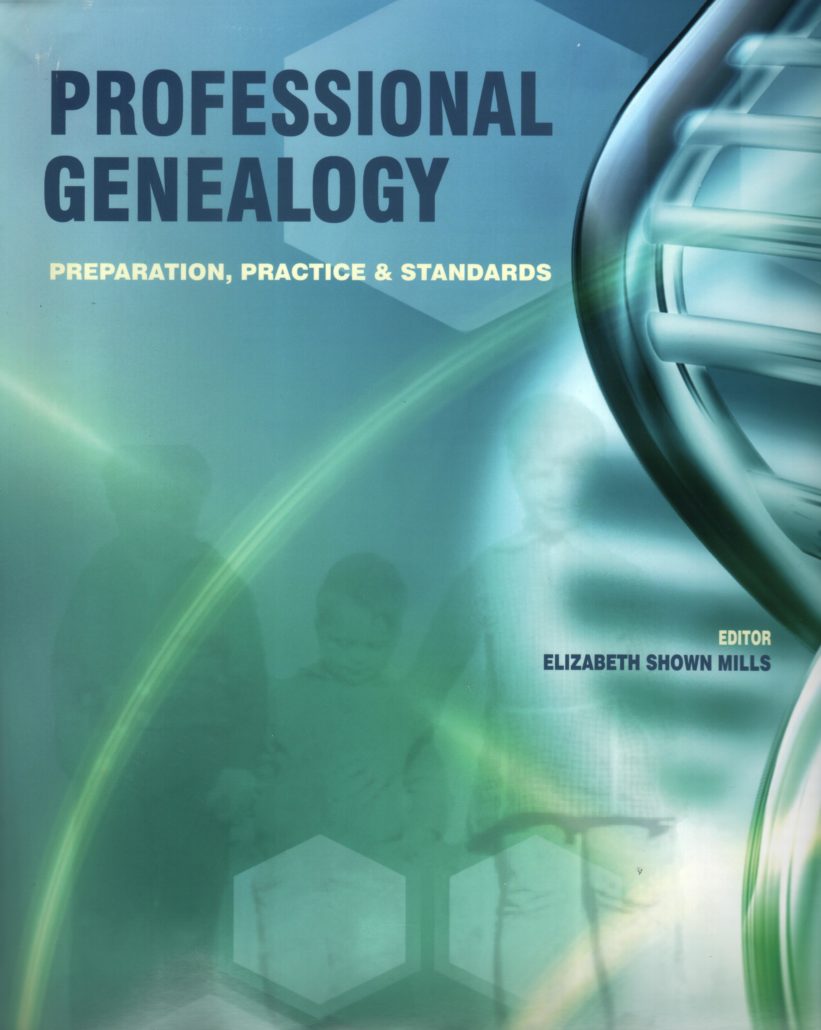
Analyzing Genealogical Research Problems
By Laura Murphy DeGrazia, CG
Excerpted from: Laura Murphy DeGrazia, “Problem Analyses & Research Plans,” Elizabeth Shown Mills, ed.,
Professional Genealogy: Preparation, Practice & Standards
(Baltimore: Genealogical Publishing Co., 2018), 295–316.
“Effective problem analysis requires a thorough understanding of three key issues. First, we must know the available sources for that problem—their accessibility, arrangement, content, and varying degrees of reliability. Second, we must have a sound grasp of evidence-analysis principles and correlation skills. Third, we must be well-versed in a variety of methods for extracting evidence that has heretofore gone unobserved.
During analysis, we scrutinize the components of the research problem. We consider what is known about the subject and what we want to learn. We break apart the assertions, assess the supporting evidence, and decide whether some or all of it needs to be strengthened. We seek gaps in research, flaws in logic, errors in interpretation, and too-hastily drawn conclusions. We look for opportunities to advance the research through additional sources or new approaches. At the conclusion of the analysis phase, we should have a thorough understanding of the problem and the existing evidence—as well as ideas for moving the research toward a resolution of the problem.
ORGANIZATION & REVIEW
All research problems have starting-point data. Whether that starting point be a single piece of information or a conclusion based on earlier research, we must evaluate what is known, how it is known, and how it relates to the current problem.
We begin by familiarizing ourselves with the research that already has been done and the evidence that can be drawn from it:
1. Read all materials to become familiar with their content.
2. Identify information and searches that are relevant to the problem.
3. List sources consulted and summarize the findings, whether negative or positive.
With these basics behind us, we are ready for a deeper analysis of the information we have at hand. This might be done in three steps:
4. Compile a biographical sketch (or genealogical summary) and timeline for the individual to be studied.
5. Create analytical notes. As we make passes through the accumulated materials, we make commentaries. We may keep all of our comments together, or create a separate sheet for each category—reminders, general concerns, observations, questions to answer, and so on. These notes will include statements such as the following:
- Why does everyone say John’s father was Tom? What’s the evidence?
- Were land records searched? I see no mention of them.
- What evidence documents the assertion that the man in Chicago in 1875 is the same man who lived in Virginia thirty years earlier?
- Several Dubois families appear nearby in multiple places. Is this a coincidence or a possible connection?
6. Identify associates. As we review copies of sources and reports, we might create a multi-column worksheet on which we record the names of associates, their relationships, and the source citations that support the evidence. Because some associates’ names will appear multiple times, it is helpful to maintain this list in a word processor or spreadsheet that can be sorted.
When we have adequately organized and summarized the materials we have accumulated for this problem, we move on to the third level of analysis: evaluating the skill with which prior research has been conducted. Some of the elements we consider during this deep analysis are as follows:
1. Missing documentation.
2. Misread or misinterpreted sources.
3. Unused or incompletely used sources.
4. Poor selection of sources.
5. Errors in analysis and correlation.
6. Too-broad or too-narrow a search focus.
This evaluation will produce one or more lists of comments, observations, and ideas from which we make a final, overall assessment of the starting point. If some evidence supporting key assertions is too weak, we must redefine the research question to address those problems. This may require us to resolve errors in interpretation, correct flaws in logic, explore unused sources, test a proposed conclusion, replace weak sources with stronger ones, or fill gaps in the subject’s life. Once we are confident that our starting-point data is sound, we are ready to develop a work plan for productive research.”
Editor’s Note: We will publish Ms. DeGrazia’s follow-up essay for developing a work plan in the October 6 issue of “Genealogy Pointers.” For more information about Professional Genealogy: Preparation, Practice & Standards and the other contributors to that volume, please click the button below.




